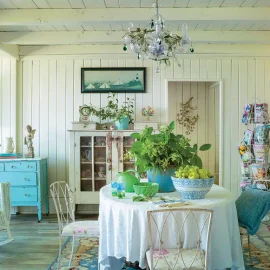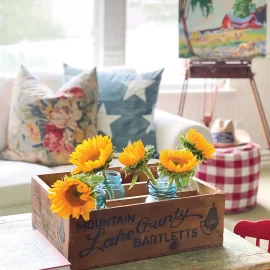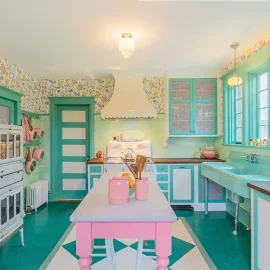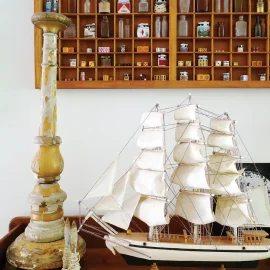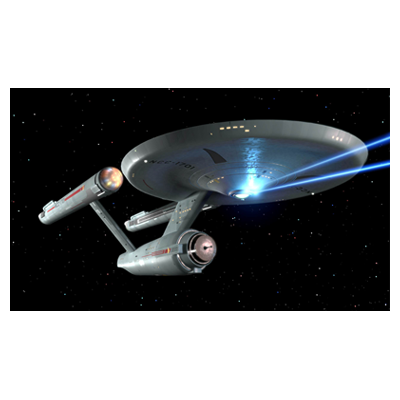
Part World War II fighter plane and part sleek Swedish office, the Starship Enterprise isn’t just an icon of American pop culture, but also of 1960s interior design.

This paragon of midcentury modern design was the brainchild of Gene Roddenberry and Matthew Jeffries. As World War II raged, both were American pilots, flying B-17s and dreaming of the future. When the war ended, Roddenberry pursued his newfound passion for literature at Columbia University, while Jeffries took on a smattering of design-related jobs, first at the Library of Congress, then as a magazine illustrator. With his knack for visuals and collection of bomber manuals, Jeffries landed his first film job as the set designer for Warner Brothers’ “Bombers B-52.” After ten years in television, Jeffries found himself sitting down to a meeting with Roddenberry. They talked wartime aviation for twenty minutes, then began a conversation that would change television.

Roddenberry, as a former pilot, wanted the Enterprise to be believable—futuristic, yes, but an ergonomic space in which a viewer could imagine him or herself living and working. As Jeffries described in an interview shortly before his death, Roddenberry had a specific literary intention for and sweeping visual idea of the show, but little in mind as far as the specifics of the Enterprise itself: “No flames, no fins, no rockets…Make it look like it’s got power.”
That was where Jeffries came in.
When a Bomber Pilot Draws a Spaceship
Jeffries designed both the exterior and interior of the Enterprise, creating both the ship’s shape and the bridge’s design. His experiences as a pilot are an obvious influence on the oval-shaped bridge’s incredibly ergonomic structure. With its central well surrounded by rectilinear red railings and a few sleek chairs, the crew can move from station to station around the perimeter without disrupting the caption and pilot in the well or clambering over cumbrous chairs. The breaks in the railing are strategically placed to allow an officer with multiple duties–such as science and first officer Spock–to move easily from his work station to the captain’s chair.
The Surprising Connection between Charles Eames and Star Trek
In addition to the ergonomics of World War II bomber planes, Jeffries drew from the best of 1960s interior design. The captain’s iconic chair–along with the other bridge chairs–were produced by Burke Furniture, a Texas company that created Knoll knockoffs. As a result, the “Burke chairs” bear a striking similarity to the work of Finnish-American architect and designer Eero Saarinen, who studied at the Cranbrook Academy of Art alongside his friends Charles and Ray Eames (and later collaborated with Charles Eames on the famous “Tulip” chair in addition to his work for Knoll). By introducing the Saarinen-Eames style into the Enterprise bridge, the Burke chairs provided the midcentury-modern space’s finishing touch and created a truly enduring look.
Nearly half a century later, thousands of people will soon flock to see Star Trek: Into Darkness to spend two hours with the characters who live and work in this iconic midcentury space. If you do, keep your eyes open for how J. J. Abrams’ set design team has reinterpreted the Enterprise bridge. The chairs, you’ll note, look a little different than the originals–in fact, they look more like authentic Eames furniture. Who knows? Eames might be on the Enterprise!
by Elaine K. Phillips


